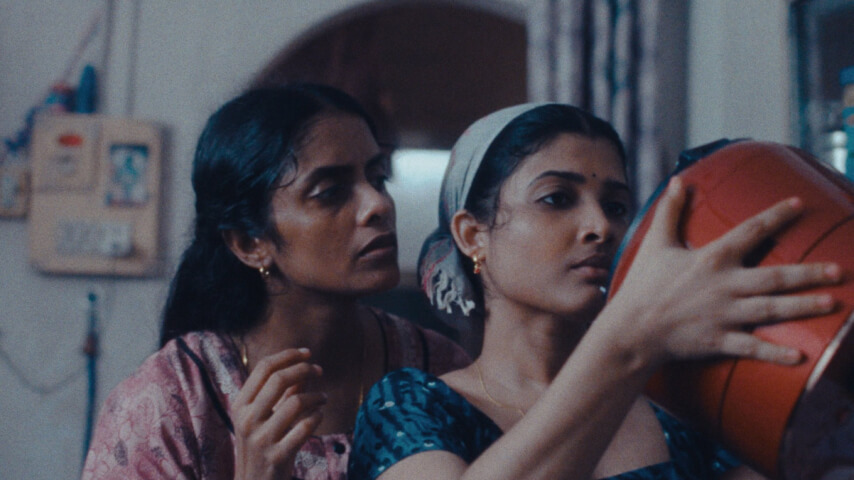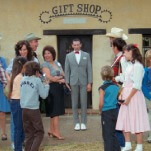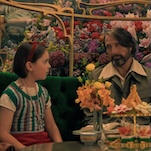Bustling bodies blur together like the raindrops pouring from the gray Mumbai sky. Connection is inevitable in All We Imagine Is Light, writer-director Payal Kapadia’s Grand Prix-winner from this year’s Cannes. This is by virtue of sheer numbers—the cramped living quarters, full subways, and busy streets map out an overwhelming urban space—and through commonality of experience. Even made anonymous by the city, its residents aren’t invisible, nor are their problems lonesome in their singularity. Opening with interview-like narration about the city itself, the film immediately situates itself in shared struggles before introducing its specific focus. Kapadia considers the bittersweet bond between women in her second feature, allowing it to breathe in the atmosphere of Southeast Asian slow cinema and Claire Denis’ moody dramas.
Kapadia’s series of encounters focuses on three nurses: one, the flirty Anu (Divya Prabha), in the first throes of passion with a young Muslim man (Hridhu Haroon) and the others old enough to have already been screwed over by the men in their lives. The latter two have been abandoned, either in death like the older widow Parvaty (Chhaya Kadam) or in life like the harder-nosed Prabha (Kani Kusruti), whose husband disappeared after getting a job in Germany. The politics of All We Imagine Is Light aren’t entirely cynical, but molded by its country’s discriminatory history and reactionary present. Not every man is threatening, but every man is a potential threat. Every crossed demographic line—like the religious taboo coloring the film’s young courtship—glows bright with danger.
Kapadia’s skill lies in her ability to interweave moments of hope into the anxiety. Her leads offer tenderness and pull back into self-protectiveness in equal measure. Kusruti’s wary eyes ache as Prabha painfully restrains herself from giving in to an office romance. When Anu quietly buys a burqa to surreptitiously see her beau in his Muslim neighborhood, excitement and dread vibrate in the air until punctured by the sharp sting of reality’s banal problems. Parvaty, pushed around by landlords and developers, can at least throw a few cathartic stones at their stupid billboards. Things don’t go their way, but they don’t go their way together.
Their frustration percolates through their surface-level resolve, perhaps as impotent in the moment as the student protestors of Kapadia’s docudrama debut, A Night Of Knowing Nothing, but uniting them on a social oasis in the city’s unforgiving sea. Cinematographer Ranabir Das returns from that first film to capture a dark, lively Mumbai. He observes the city naturally, with streetlights, storefronts, and lit windows punctuating the monsoon-drenched rat race. His camera rocks and rolls with the train cars of a commute, and sneaks up on quiet moments between lovers like a nosy neighbor. These dense frames, often blue-hued thanks to scrubs and moonlight, relax when the film takes a turn for the rural.
When the women escape city life to help Parvaty move back to her coastal village, the mundane begins to give way to something more exceptional, even magical: freed from the hustle and bustle, everyone can finally exhale. It’s a stark turn for the humid film, one that leaves it almost feeling naked without the crowds and close-built apartments. But even here, the women find new ways to process their pain and to further embrace each other—even if it feels a little less connected to their reality than the sequences showcasing their day-to-day. All We Imagine Is Light unveils its intimate relationships without ever feeling small or idiomatic. Rather, its lyrical approach allows us to map what we’re bringing to the table onto their corner of the world, to their version of our world’s problems. It also has the best rice cooker symbolism since 35 Shots Of Rum. With as many marketplaces as the film runs through, it’s no surprise that so many of life’s complexities can be tucked away inside a kitchen appliance.
Director: Payal Kapadia
Writer: Payal Kapadia
Stars: Kani Kusruti, Divya Prabha, Chhaya Kadam, Hridhu Haroon, Azees Nedumangad
Release Date: November 15, 2024









































